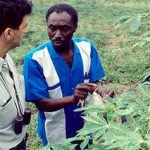Mental health articles
OF mental health care and mentally ill
the psychodynamic approach to team development
To help clients understand how past experiences influence current behaviors, mental health professionals use the psychodynamic approach, even if it is not adopted as a formal
therapeutic orientation. This approach can also be useful when consulting with teams, as the group’s past experiences, as well as those of each member, will influence
their current functioning. Such a perspective can assist the consultant in understanding why team members may have overly strong reactions to what appear to be trivial issues.
In writing about the psychodynamic approach to team development, Koortzen and Cilliers (2002) list assumptions about this approach • Experiential learning is one of the best ways to facilitate adult learning (Neumann,
Kellner, & Dawson-Shepherd, 1997). The interventions in this approach therefore take the form of experiential group relations workshops. Adult learning about interpersonal
relationships occurs by making use of available opportunities in this dynamic
environment. Team members take responsibility for their own learning by using these opportunities. Consideration of the here-and-now behavior enhances learning. It
also provides the consultant with valuable information on the processes and dynamics in the team.
• We also believe that the individual’s and team’s behavior (such as needs and anxieties) are both conscious and unconscious, and that consultants should work on both levels.
• Human and personality development start with individual intrapersonal awareness, and the consultant also provides opportunities to individuals to study their own dynamics within the team.
• Intrapersonal awareness forms the basis for interpersonal awareness and relationship building.
• A group of workers—or work team—has a unique life of its own with the individuals (the microsystem) forming the basic component.
• Group behavior follows predictable processes as well as specific, collectively developed
conventions, thus creating the team’s dynamics.
• Group dynamics refers to the study of how individuals and teams relate to each other,
and the implied assumptions and myths. Consciously determined policies are sometimes supported and often subverted by less-conscious factors.
• The group process and dynamic consultant interprets this behavior in order to help move the group along its path to maturity and interdependence. (pp. 264–265) Koortzen and Cilliers (2002) go on to describe the specific behaviors that consultants
should address to improve the functioning of work teams:
• The way individuals and teams manage their anxiety by making use of various defense mechanisms
• The way individuals and teams exercise their authority in the different systems of the team and organization
• The nature of the interpersonal relationships within the team and the organization
• The relationships and relatedness with authority, peers, and subordinates
• Leadership practices and the management of boundaries
• Intergroup relationships between subsystems or departments
• Identity, roles, tasks, space, time, and structures as boundaries, and the management hereof in coping with anxiety
Post Footer automatically generated by wp-posturl plugin for wordpress.







Leave a Reply